
The Battle of Lepanto was a naval engagement that took place on 7 October 1571 when a fleet of the Holy League, a coalition of Catholic states arranged by Pope Pius V, inflicted a major defeat on the fleet of the Ottoman Empire in the Gulf of Patras. The Ottoman forces were sailing westward from their naval station in Lepanto when they met the fleet of the Holy League which was sailing east from Messina, Sicily. The Spanish Empire and the Venetian Republic were the main powers of the coalition, as the league was largely financed by Philip II of Spain, and Venice was the main contributor of ships.

The Sea Hawk is a novel by Rafael Sabatini, originally published in 1915. The story is set over the years 1588–1593 and concerns a retired Cornish seafaring gentleman, Sir Oliver Tressilian, who is villainously betrayed by a jealous half-brother. After being forced to serve as a slave on a galley, Sir Oliver is liberated by Barbary pirates. He joins the pirates, gaining the name "Sakr-el-Bahr", and swears vengeance against his brother.

The Barbary pirates, or Barbary corsairs or Ottoman corsairs, were Muslim pirates and privateers who operated from North Africa, based primarily in the ports of Salé, Rabat, Algiers, Tunis, and Tripoli. This area was known in Europe as the Barbary Coast, in reference to the Berbers. Their predation extended throughout the Mediterranean, south along West Africa's Atlantic seaboard and into the North Atlantic as far north as Iceland, but they primarily operated in the western Mediterranean. In addition to seizing merchant ships, they engaged in Razzias, raids on European coastal towns and villages, mainly in Italy, France, Spain, and Portugal, but also in the British Isles, the Netherlands, and Iceland. The main purpose of their attacks was to capture slaves for the Ottoman slave trade as well as the general Arab slavery market in North Africa and the Middle East. Slaves in Barbary could be of many ethnicities, and of many different religions, such as Christian, Jewish, or Muslim.
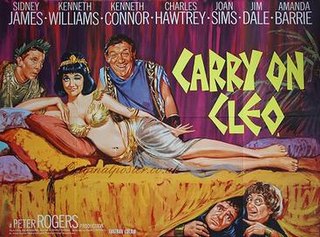
Carry On Cleo is a 1964 British historical comedy film, the tenth in the series of 31 Carry On films (1958–1992). Regulars Sid James, Kenneth Williams, Kenneth Connor, Charles Hawtrey, and Jim Dale are present and Connor made his last appearance until his return in Carry On Up the Jungle six years later. Joan Sims returned to the series for the first time since Carry On Regardless three years earlier. Sims would now appear in every Carry On up to Carry On Emmannuelle in 1978, making her the most prolific actress in the series. Jon Pertwee makes the first of his four appearances in the series. The title role is played by Amanda Barrie in her second and last Carry On. Along with Carry On Sergeant and Carry On Screaming!, its original posters were reproduced by the Royal Mail on stamps to celebrate the 50th anniversary of the Carry On series in June 2008.

The action of 3 October 1624 was a naval engagement that took place near San Pietro Island, Sardinia, during the war against the Barbary corsairs. A squadron of galleys from the Kingdom of Naples (Spain), Grand Duchy of Tuscany and Papal States under Diego Pimentel engaged a squadron of six Algerian ships under Azan Calafate. The Algerians were defeated, their flagship was destroyed, and four ships were captured. Also, the Christian slaves they owned were freed.

Bagnio is a loan word into several languages. In English, French, and so on, it has developed varying meanings: typically a brothel, bath-house, or prison for slaves.

A galley is a type of ship that is propelled mainly by oars. The galley is characterized by its long, slender hull, shallow draft, and low freeboard. Virtually all types of galleys had sails that could be used in favorable winds, but human effort was always the primary method of propulsion. This allowed galleys to navigate independently of winds and currents. The galley originated among the seafaring civilizations around the Mediterranean Sea in the late second millennium BC and remained in use in various forms until the early 19th century in warfare, trade, and piracy.
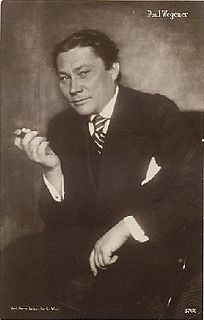
Paul Wegener was a German actor, writer, and film director known for his pioneering role in German expressionist cinema.
A galley slave is a slave rowing in a galley, either a convicted criminal sentenced to work at the oar, or a kind of human chattel, often a prisoner of war, assigned to the duty of rowing.
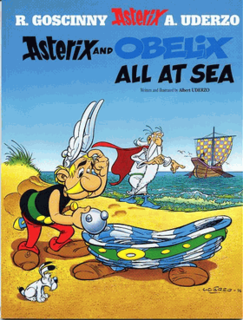
Asterix and Obelix All at Sea is the thirtieth volume of the Asterix comic book series, by Albert Uderzo. The album was dedicated to Uderzo's grandchild, as well as to the American actor Kirk Douglas.
A galley is a ship or boat primarily powered by multiple sets of oars.
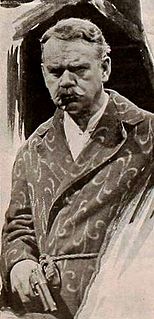
Hardee Kirkland was an American film actor and director of the silent era who appeared on stage. Kirkland was born in Savannah, Georgia, the son of former Confederate Brigadier General William Whedbee Kirkland and the older brother of the actress Elizabeth Kirkland, who performed as Odette Tyler. He appeared in 41 films between 1915 and 1925. He also directed 33 films between 1912 and 1914. He died in Los Angeles, California, at the age of 60.

The Sea Hawk is a 1924 American silent adventure film about an English noble sold into slavery who escapes and turns himself into a pirate king. Directed by Frank Lloyd, the screen adaptation was written by J. G. Hawks based upon the 1915 Rafael Sabatini novel of the same name. It premiered on June 2, 1924, in New York City, twelve days before its theatrical debut.

The Galley Slave is a 1915 American silent drama film directed by J. Gordon Edwards and starring Theda Bara. Based on the play of the same name by Bartley Campbell, the film's scenario was written by Clara S. Beranger. The Galley Slave is now considered lost.

The battle of Alboran took place on 1 October 1540 off the isle of Alboran during the Ottoman-Habsburg struggle for the control of the Mediterranean when a Spanish fleet under the command of Bernardino de Mendoza destroyed an Ottoman fleet commanded by Ali Hamet, sinking a galley and capturing 10 other ships.

The Battle of the Narrow Seas, also known as the Battle of the Goodwin Sands or Battle of the Dover Straits was a naval engagement that took place on 3–4 October 1602 during the Anglo-Spanish War of 1585 and part of the Dutch Revolt. An English fleet under Sir Robert Mansell intercepted and attacked six Spanish galleys under the command of Federico Spinola in the Dover Straits and was fought from off the coast of England and finally off the Spanish Netherlands. The English were soon joined by a Dutch fleet under Jan Adriaanszoon Cant and they completed the destruction.
Frederik Fuglsang (1887–1953) was a Danish cinematographer who worked largely in the German film industry. Fuglsang was employed by Nordisk Film, who initially brought him to Germany. He worked frequently during the Weimar era on films such as Vanina (1922) and Frederic Zelnik's The Weavers (1927). He was married to the actress Käte Fuglsang.

The Slave is a 1962 Italian peplum film directed by Sergio Corbucci and starring Steve Reeves and Gianna Maria Canale. It is an unofficial sequel to Stanley Kubrick's 1960 film Spartacus, as it includes a mention of the character Varinia, who was specifically created for the novel template for that film. The running time was 100 minutes.
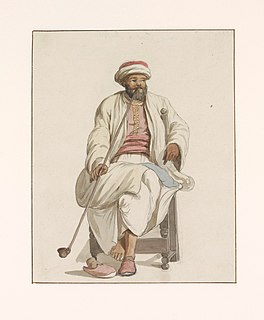
Slavery in Malta existed and was recognised from classical antiquity until the early modern period, as was the case in many countries around the Mediterranean Sea. The system reached its apex under Hospitaller rule, when it took on unprecedented proportions, largely to provide galley slaves for the galleys of the Order, as well as other Christian countries. Commerce raids, which were the backbone of the Knights' economic military system helped to maintain this system, partly through creating the demand for slaves to maintain the military fleet, but also due to the influx of Muslim prisoners when battles were won. Thus Malta became the hub of slavery in Christian Europe. Slavery was abolished in Malta by Napoléon Bonaparte during his invasion of the Maltese archipelago on 16 June 1798.

The Galley Slave is a 1919 German silent historical adventure film directed by Rochus Gliese and Paul Wegener and starring Wegener, Lyda Salmonova, and Paul Hartmann. Inspired by several of the novels of Honoré de Balzac including Lost Illusions, it was released in two parts on separate dates during October 1919. Although Gliese was the principal credited director, the film's star Wegener also worked on its production.